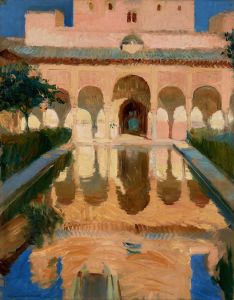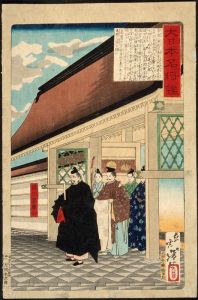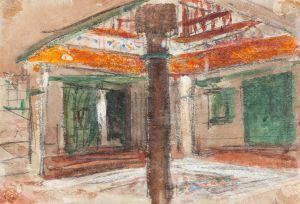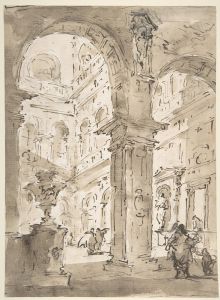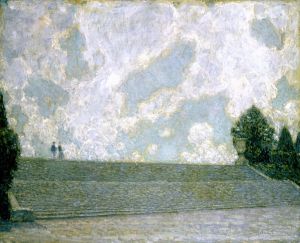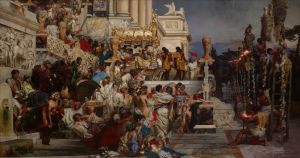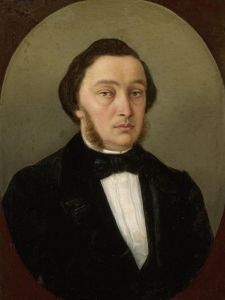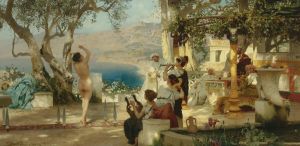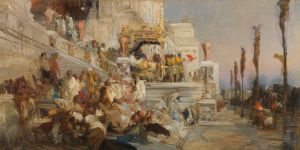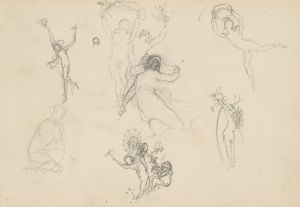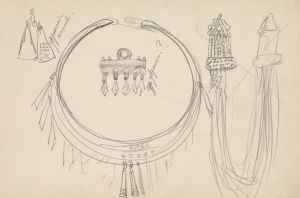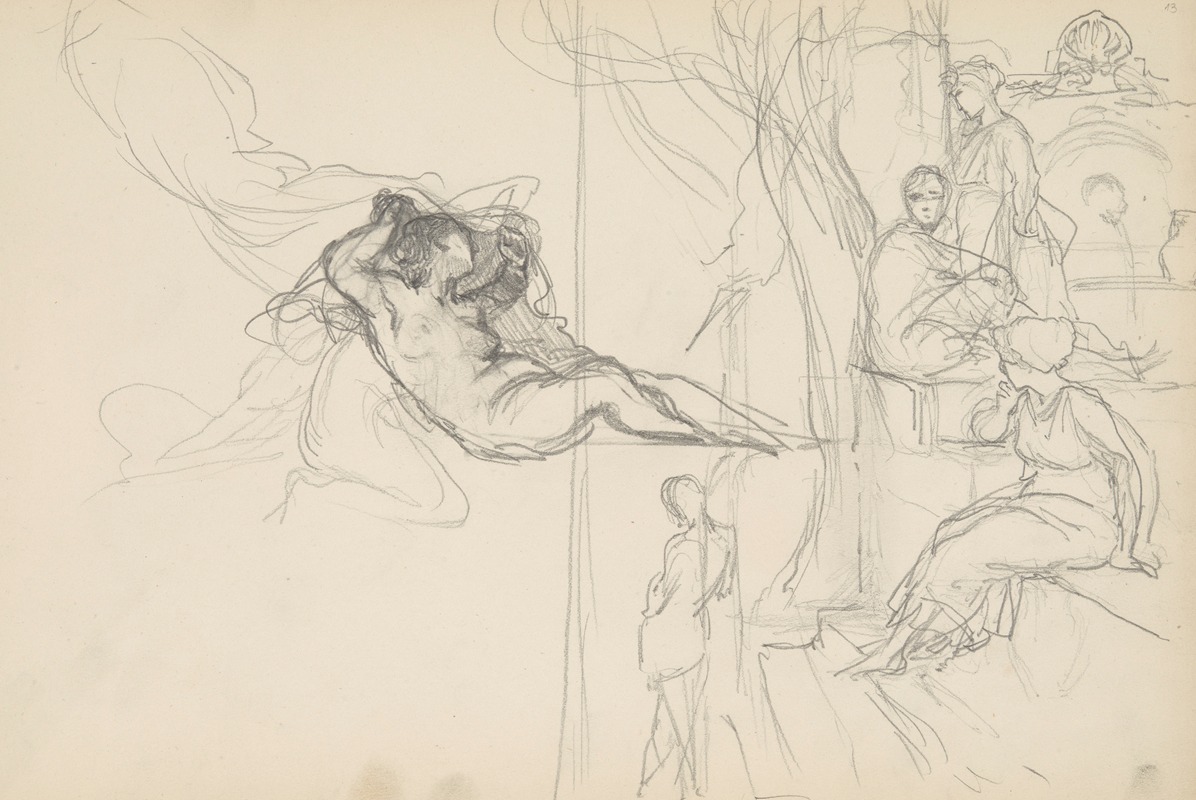
szkic postaci do plafonu ‘Jutrzenka’ w pałacu J. Neczajewa-Malcewa w Petersburgu oraz szkic do obrazu ‘Podpatrzona schadzka’
A hand-painted replica of Henryk Siemiradzki’s masterpiece szkic postaci do plafonu ‘Jutrzenka’ w pałacu J. Neczajewa-Malcewa w Petersburgu oraz szkic do obrazu ‘Podpatrzona schadzka’, meticulously crafted by professional artists to capture the true essence of the original. Each piece is created with museum-quality canvas and rare mineral pigments, carefully painted by experienced artists with delicate brushstrokes and rich, layered colors to perfectly recreate the texture of the original artwork. Unlike machine-printed reproductions, this hand-painted version brings the painting to life, infused with the artist’s emotions and skill in every stroke. Whether for personal collection or home decoration, it instantly elevates the artistic atmosphere of any space.
Henryk Siemiradzki (1843–1902) was a Polish painter known for his large-scale academic and historical paintings, often depicting scenes from antiquity and mythology. Among his works are preparatory sketches and studies that provide insight into his creative process and artistic vision. Two notable examples of his preparatory works are the sketch for the ceiling painting "Jutrzenka" in the palace of J. Nechayev-Maltsov in Saint Petersburg and the sketch for the painting "Podpatrzona schadzka" ("A Surprised Rendezvous").
The sketch for "Jutrzenka" ("Aurora" or "Dawn") was created as part of Siemiradzki's contribution to the decoration of the Nechayev-Maltsov Palace in Saint Petersburg. This palace, owned by the wealthy Russian industrialist and art patron Ivan Nechayev-Maltsov, featured elaborate interiors adorned with works by prominent artists of the time. Siemiradzki's "Jutrzenka" was designed as a plafon (ceiling painting), a genre often associated with grand architectural settings. The sketch reveals Siemiradzki's mastery of composition and his ability to depict mythological themes with elegance and dynamism. The subject of Aurora, the Roman goddess of dawn, aligns with Siemiradzki's frequent exploration of classical motifs, showcasing his academic training and his interest in the interplay of light and color.
The sketch for "Podpatrzona schadzka" ("A Surprised Rendezvous") is another example of Siemiradzki's preparatory work. This painting, like many of his other works, reflects his fascination with storytelling and his attention to detail. While the exact narrative of the painting is not widely documented, the title suggests a scene of romantic or clandestine intrigue, a theme that was popular in 19th-century art. Siemiradzki's sketches often served as a means to refine his ideas and experiment with composition, ensuring that the final work achieved the desired emotional and visual impact.
Both sketches highlight Siemiradzki's technical skill and his dedication to the preparatory process, which was a hallmark of academic painting in the 19th century. They also underscore his ability to balance historical and mythological themes with a sense of drama and beauty, characteristics that made him one of the most celebrated painters of his era. These works remain valuable not only as studies but also as standalone pieces that offer a glimpse into the artist's creative journey.





